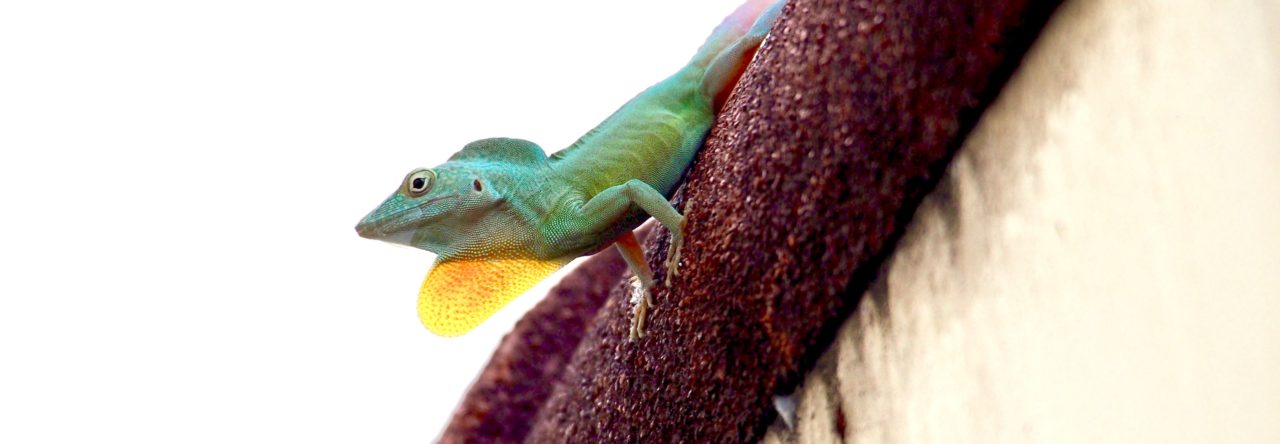Lizards have become a staple of laboratory studies of locomotion. A standard approach, honed to perfection over 30 years of such work, is to get a lizard to run down a narrow trackway or on a dowel to determine how fast it can run and, in recent years via high speed video, to see exactly how the different limb elements move. Questions that one might ask include whether long-legged lizards run faster than their short-legged compatriots, whether species can run faster on broad surfaces as compared to on narrower supports, or whether the loss of a tail affects sprint speed. In fact, the sort of questions one might ask about lizard locomotion are virtually endless.
These studies have one Achilles heel, however, Most such studies focus on examining maximum speed of the lizard, but how can one ensure that lizards are actually running full tilt? The nagging fear has always been that differences in speed might result not for different capabilities, but rather as a result of differential motivation–some lizards just want it more than others.
But how can one elicit maximal speed or investigate whether a lizard is holding back? One approach to this question was revealed in a recent paper in J. Herp. Jones and Jayne tested whether a loud noise might cause a lizard to run faster and the answer is: yes, when subjected to repeated loud noises, lizards in experimental race tracks do, in fact, run faster.
And just what kind of loud noise? Let’s let junior author Bruce Jayne explain the genesis of the study:
“As you well know, some days things just don’t seem to go well when testing whole animal performance. On one of those days out of frustration, fatigue, etc., we simply yelled at an apparent “slacker” lizard in jest. Much to our surprise this seemed to make a difference. We were also aware of the two recent papers for other species of lizards in which sound appeared relevant to behaviors associated with detecting threats. So, we figured what the heck, why not test for such effects systematically? Unlike many of the studies that you and others have performed with anoles, unless we simply can’t get a lizards to run along the racetrack or they appear unhealthy, we include data from all of the individuals rather than subjectively rating the trials for their quantity. Perhaps, some of the gains in speed associated with our yelling were greatest for those individuals that otherwise might have been discarded after receiving a poor subjective quality rating. Of course, we lack a simple way of determining this. Similarly, we have not yet methodically tested for whether expletives are more effective than milder language.”
The implications of this study are several-fold. First, of course, it shows that lizards do respond to auditory stimuli, a topic that has received relatively little attention. With regard to laboratory locomotion studies, it provides further caution that the performance of animals in the lab may not be indicative of their maximal capabilities, and suggests that loud yelling may need to become a standard part of experimental protocol. We will anxiously await follow-up work to learn how vehemently the researcher must yell, and how nasty must be his or her invectives.
- Evolution in Real Time on Lizard Island - March 23, 2025
- Spider Snags Adult Anolis osa - March 22, 2025
- An Homage to the Green Anoles of New Orleans - March 21, 2025


Martha Munoz
During our CTmin trials this past summer we heckled our lizards. I wonder if this helped them flip over. If nothing else, I wonder if our foul-tongued jeers hurt their feelings.